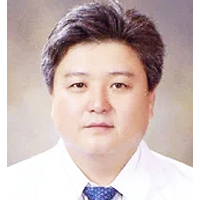Phytochemicals candidates as promising preventives and/or curatives for COVID-19 Infection: A brief review
Published on: 23rd March, 2021
OCLC Number/Unique Identifier: 9272357985
The outbreak of new coronavirus acute respiratory disease (SARS-CoV-2) has been a major global challenge for the scientific community to save humanity. While, the unviability of the vaccine keeps most classes of society, especially African countries, suffer from the healthcare problem. Conventional medicine plants become the alternative method for the therapeutic because it contains valuable bioactive compounds. This brief review devoted the importance of medicinal plants such as Citrus, olive, garlic, ginger, green tea, woad, broad-leaf privet, Japanese torreya, and saffron crocus, by their antiviral effects (anti-SARS coronavirus, anti-HSV, and anti-HIV diseases) and their promising uses as probable boosters of the immune and anti-inflammatory response from SARS-CoV-2 infection. Based on scientific reports, bioactive compounds could inhibit 3-chymotrypsin-like cysteine protease and human protein ACE2, where these facts can be attractive to develop effective drugs.
Green Synthesis of Citrus sinensis Peel (Orange Peel) Extract Silver Nanoparticle and its Various Pharmacological Activities
Published on: 28th March, 2025
Citrus sinensis is a rich source of bioactive compounds and has attracted attention due to its medicinal benefits. Historically regarded as agricultural waste, orange peel is rich in flavonoids, polyphenols, tannins, and essential oils with antibacterial, anti-inflammatory, and antioxidant qualities. The phytochemicals in Citrus sinensis peel were used as natural reducing and stabilizing agents in the green synthesis method used in this work to create silver nanoparticles (AgNPs). This method is an environmentally friendly alternative to conventional nanoparticle production, eliminating the need for hazardous chemicals. Based on the study’s results, green-synthesized silver nanoparticles derived from Citrus sinensis peel extract offer a sustainable and biocompatible substitute for biomedical applications. The pharmaceutical and healthcare industries may find therapeutic uses for them due to their exceptional antibacterial, antioxidant, and anticancer properties.




